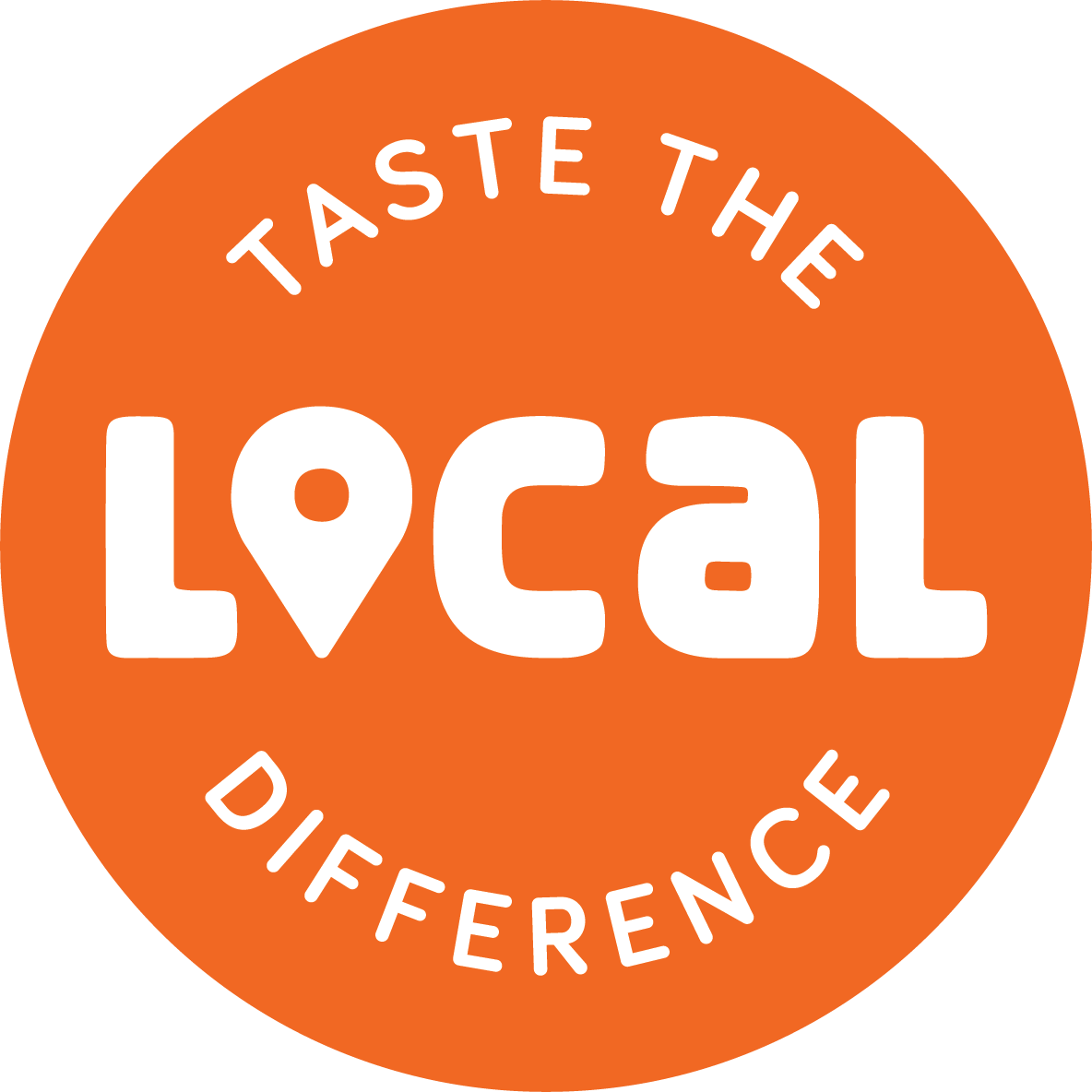Curious about the world of Michigan mushrooms but not quite sure where to begin? We had the opportunity to glean some insight into the fascinating world of fungi through the eyes of Gabrielle Cerberville aka @chaoticforager, Michigan-based forager, science-based content creator, enthusiastic educator, and self-proclaimed Mushroom Auntie.
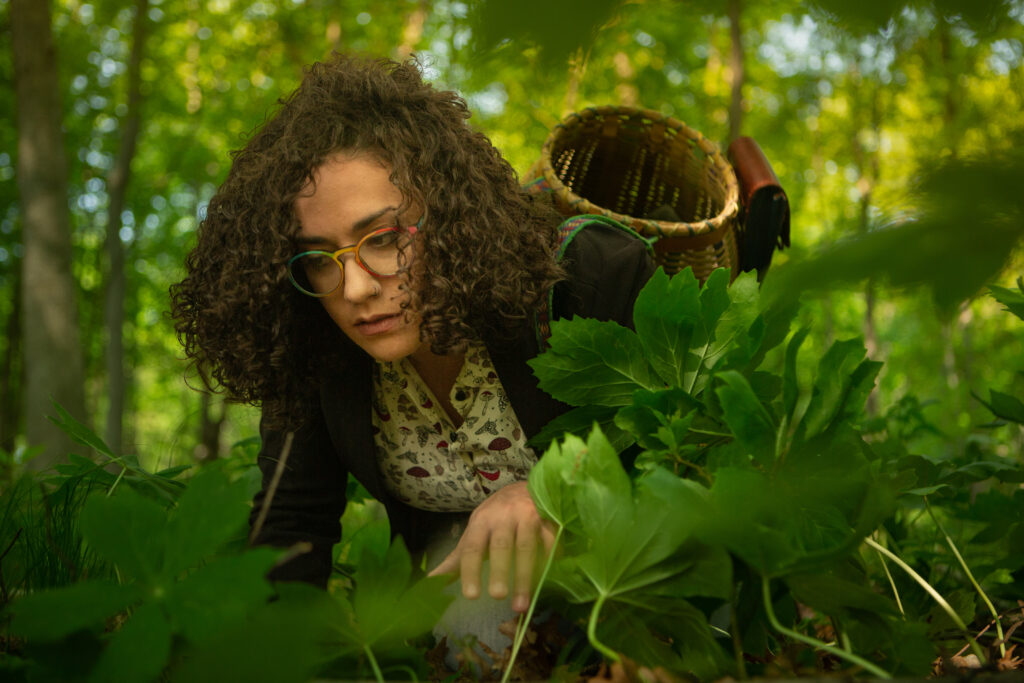
Taste the Local Difference: What sparked your interest in foraging Michigan mushrooms, and how did you get started?
Gabrielle Cerberville: My interest in mushrooms really took off when I was about 25. I’ve always had a love for plants, but learning about mushrooms really kickstarted a new obsession for me, one I’ve carried with me ever since. My first edible mushroom was a honey mushroom (Desarmillaria caespitosa, aka the “ringless honey mushroom”), and at first, it was idle curiosity that led me to take a few photos and post them on a mushroom Facebook group, but once I found out that they were edible (and that there were hundreds of other edible mushrooms out there), I dug in deep and learned everything I could.
TLD: Could you share some tips for beginners who want to start foraging mushrooms in Michigan?
GC: First, join the Michigan Mycological Society! There are great people involved in the society who are on the cutting edge of mycological research in the country, and connecting with other foragers will teach you so much that you could probably never learn from books. Books are helpful though, and in particular, regionally-specific books like Mushrooms of the Upper Midwest will teach you how to key out unknown species using the characteristics of each mushroom you find. Online resources like Facebook groups, r/mycology on Reddit, shroomery.com, and Michael Kuo’s mushroomexpert.com are great for keying out your finds too, as well as connecting with a vibrant community of some of the best mycologists in the world. If you can find a forager who leads mushroom walks in your area (sometimes called forays), that can be a good way to get more hands-on experience (these are often hosted by mycological societies around the country).
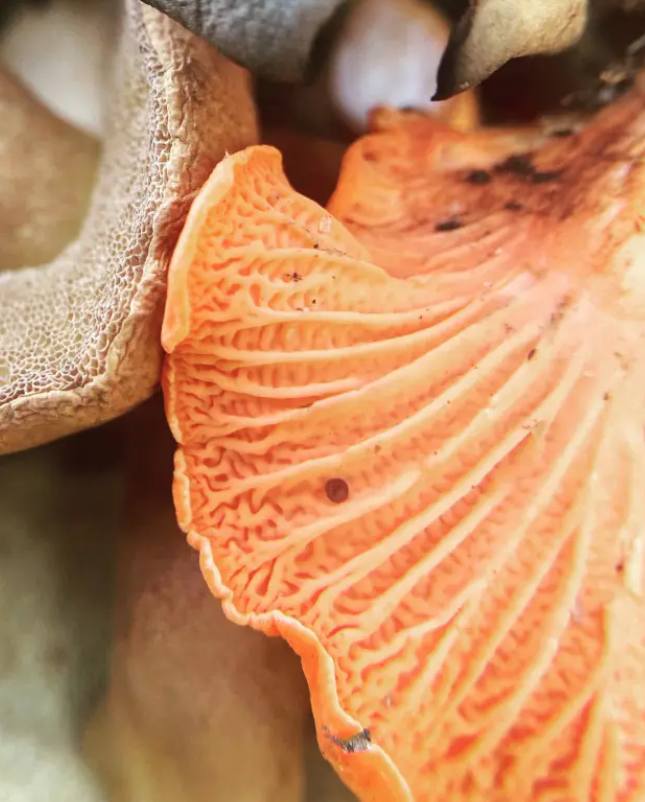
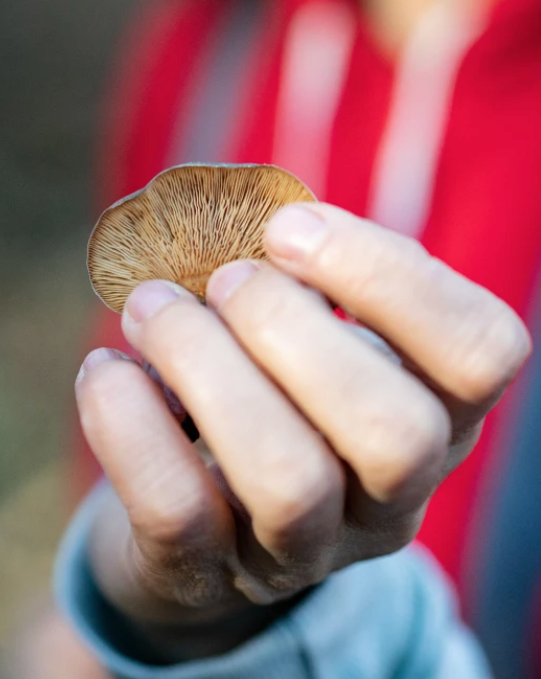
TLD: What are some common edible mushroom species found in Michigan and what is your current favorite?
GC: There are hundreds of edible fungi found in Michigan. A few of the common and easy-to-identify edibles include chicken of the woods (Laetiporus sulphureus and Laetioporus cincinnatus), chanterelles (Cantherellus spp.), morels (Morchella spp.), puffballs (Calvatia spp. and Lycoperdon/Apioperdon spp.), hen of the woods (Grifola frondosa), various boletes including porcini, and countless others. My favorite mushroom is the chanterelle, and unfortunately, I’ve had a couple of bad years recently with nary a chanty to be found, but if we stop having such dry Junes then perhaps I’ll start finding them again!
TLD: How can folks take precautions when foraging mushrooms?
GC: First, never, ever, EVER eat anything unless you know for sure what it is. While the vast majority of mushrooms won’t hurt you, we do have deadly toxic species here in Michigan and plenty more that will give you the worst tummyache of your life. There are no identification shortcuts, despite the many many misleading “rules” people come up with (like the pervasive idea that if you cook a mushroom and it turns black it’s fine, or if it tastes good then it’s non-toxic). It’s always okay to touch a mushroom even if you don’t know what it is, as mycotoxins are absorbed through your gut, not your skin. Never munch on a hunch! If you’re uncertain of what you have, it’s a sign that you need to either spend more time working on your identification skills or you need to get some help or a second opinion from a more knowledgeable community member. There are old mushroom hunters and bold mushroom hunters, but there are no old, bold mushroom hunters. No lunch is worth your life! If you’re eating something for the first time, start with just a little bit and wait to see how you feel. Foragers eat a larger variety of foods than the average population, so we have more opportunities to experience allergic reactions.
There are old mushroom hunters and bold mushroom hunters, but there are no old, bold mushroom hunters.
old irish adage
TLD: Are there any particular regions in Michigan that are known for abundant mushroom foraging opportunities?
GC: In general, fungi will thrive in areas that have mature trees, some decay, consistent moisture, a bit of disturbance, and rich soil. I do most of my mushroom hunting in the Kalamazoo area where I live, but I’ve done quite a bit of hunting around Yankee Springs, up north towards the UP, and in the Detroit area. The Mesick area is known for its excellent morel hunting opportunities, but I find plenty all around Michigan.
TLD: What are the best seasons or times of the year to go mushroom foraging in Michigan?
GC: The best time of year to go mushroom hunting is anywhere from mid-May until about mid-November. You’ll probably find the most variety between July and September, but Michigan just happens to be a really excellent place to find mushrooms in general. I’ve found edible mushrooms growing in every single month of the year right in Kalamazoo.
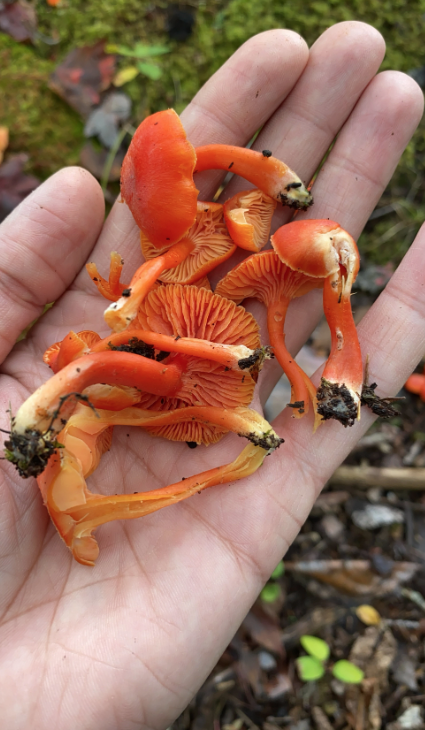
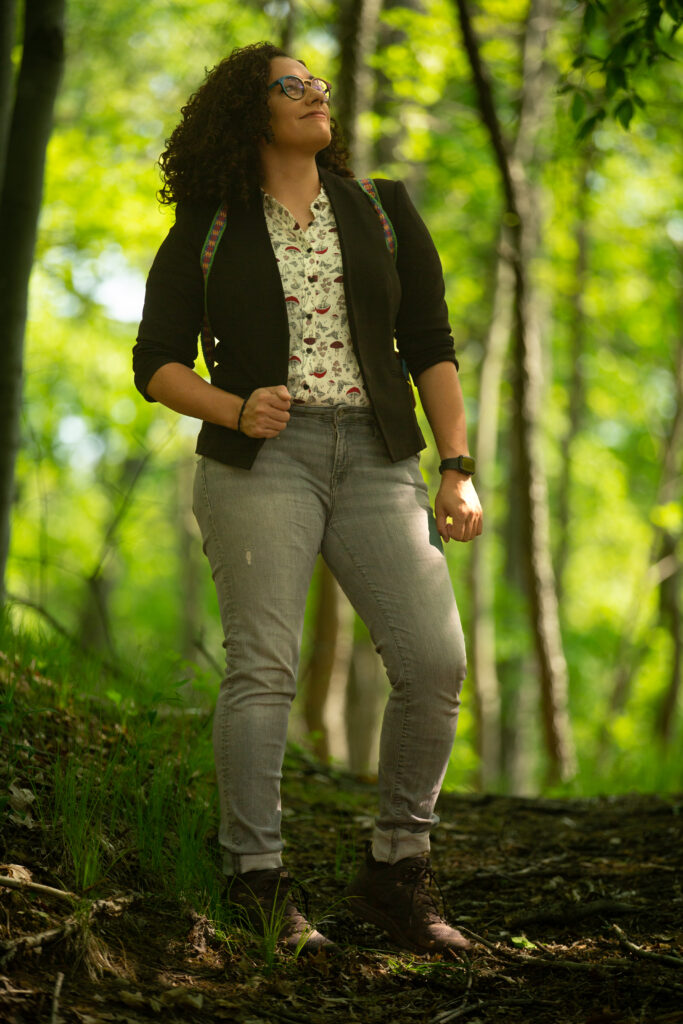
TLD: What kind of sustainable practices or ethical guidelines do you follow while foraging mushrooms in Michigan?
GC: There are, unfortunately, not many agreed-upon practices when it comes to fungi foraging in general. Mushrooms are not plants, nor are they like them, as mushrooms are the fruiting body produced by the fungal organism, which is mostly unseen. Some people believe that this means we should feel entitled to take everything we see without regard for others. However, in my opinion, it is most respectful to leave something behind for other foragers, including humans, insects, other mammals, and the other various creatures that like to eat mushrooms. I only take what I know I can use within one year of harvesting, and once I have enough, I stop collecting for the year or start giving mushrooms away to friends and family.
TLD: What are your foraged mushroom go-to recipes?
GC: Scrambled eggs are a great way to decide if you like the flavor of a new mushroom. Because eggs are pretty neutral, the flavor of the mushroom can really pierce through. My favorite recipes depend on the type of mushroom I’m using since every mushroom is different, but I love making mushroom curries, soups, stir-fries, chili, fritters, using them as meat substitutes, and even in the case of giant puffballs, making mushroom pizza with puffball crusts.
TLD: What’s your most mushroomy-est joyful memory of foraging in Michigan?
GC: My partner Rudy and I do a lot of foraging together, but one of my favorite memories is finding our first Lactarius indigo (blue bleeding milkcap) while on a road trip. They are curious little mushrooms with vibrant blue milk (think the color of Bantha milk from Star Wars, but brighter), and we had been hunting for them for over a year. It was a wonderful (and delicious) memory.
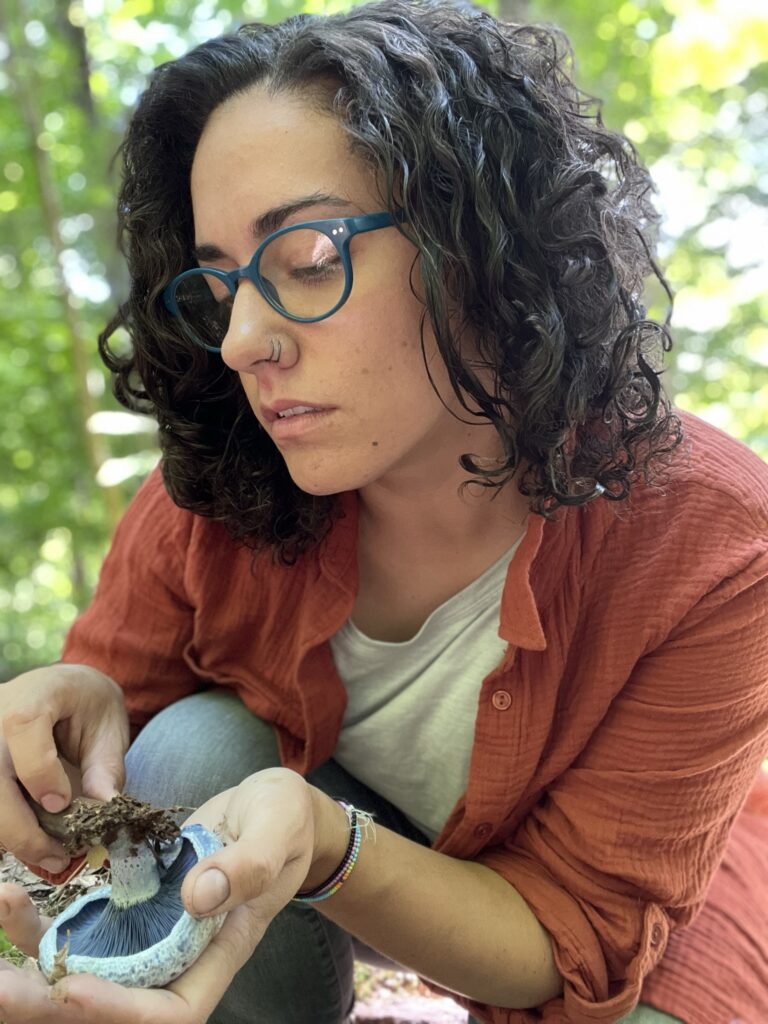
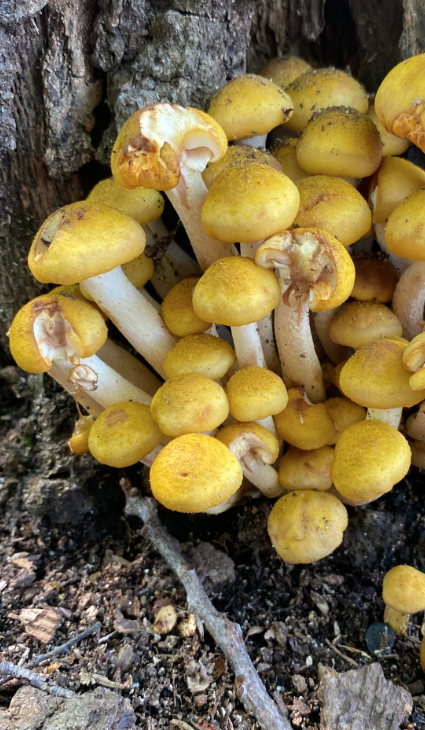
TLD: Do you have anything else you’d like our readers to know about?
GC: You can find my free educational videos on social media by searching for @chaoticforager, and I’m currently writing a book about foraging which will be published by Harper (an imprint of Harper Collins) in 2025. You can also check out my mushroom music projects at www.gabriellecerberville.com.
Further Reading, Resources, and Recipes:
- Woodland Harvest: Balsamic Roasted Mushrooms Over Colcannon Potatoes
- Pork, Mushrooms & Wild Rice: Modern Twist on a Childhood Meal
- Wild Foraged Maitake with Tarragon Beurre Blanc
- Chestnut Mushroom Risotto
- Veggie Ramen
Emily Row is the Brand and Media Manager at Taste the Local Difference. You may contact her via email [email protected].
